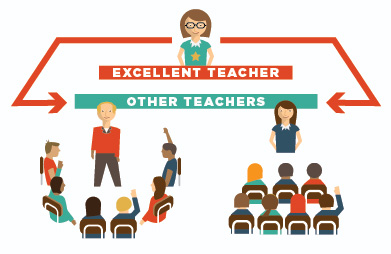
The American Psychological Association cites classroom management as the most sought after subject for teacher professional development. This article, first of a three-part series, explores the fundamental pillars to creating a positive classroom environment and avoiding common discipline problems.
Teachers commonly aim to have a “toolkit” of discipline strategies to use in their classrooms. While it can be helpful to maintain a rich repertoire of strategies, in order to be a truly effective classroom leader, it is pertinent for the teacher to develop an effective belief system.

The Importance of Beliefs
You may be wondering why beliefs matter, if you have solid skills and strategies. Positive leadership in the classroom is built upon authentic, caring relationships between teachers and students. In order to cultivate that relationship, it is essential that the teacher maintain a positive outlook about teaching and about her students.
Longstanding research proves that when teachers believe in the capability of their students and expect results, students actually perform better. Recent studies point out the crucial role of a “growth mindset.” Rather than seeing students’ intelligence as static or fixed, the growth mindset focuses on the potential for development and change. On the same note, reframing “bad” behaviors can help teachers avoid discipline issues and promote achievement.
The first step in cultivating productive beliefs about students is taking a personal inventory of your current beliefs. Do you see your students as capable of achieving? Interested in learning or unmotivated? Attentive or unable to concentrate? Willing to follow directions, or purposely defiant? When you think about your students’ generation, do you see the value in their interests, or do you view their hobbies as sub-par?
Reframing the way we see students can literally transform our teaching. Negative thinking traps a teacher into thinking that students cannot succeed or cannot behave. This literally squelches motivation to think creatively, and a teacher can easily find several factors to blame for student failure including their home life, peer influences or lack of resources. Have you ever accepted student misbehavior or failure and simply placed blame upon circumstances out of your control? Looking for the positive opens up possibilities to recognize the good in our students and help them move forward.
Creating a positive classroom climate requires you to hold yourself and your students accountable for progress. Blaming and complaining stop here; rather than wasting time venting and being negative, your new outlook will allow you to use your time to seek out the positive progress that you see, acknowledge it and teach accordingly.
In articles two and three, we will explore specific bodies of knowledge and practice that are essential to your practice. Before that, let’s look at how to reframe three common student misbehaviors in order to view them more productively.
Tardiness and absences: Teachers may believe that tardiness to class is the outcome of lazy, unmotivated or apathetic students and parents. In reality, there may be a host of factors contributing to your students’ tardiness or absences. Some students are dealing with unstable situations at home and it is important that we begin to understand what obstacles our students face in making it to school each day. Rather than reacting with disciplinary measures, try opening up an honest and sensitive dialogue with your students to see what’s really going on and how you may be able to help. Calling out of turn: It can be irritating to try to maintain order in the classroom when students are calling out of turn. Rather than viewing these behaviors as defiant, you can think about your students’ behavior as an extension of that in their home and social lives. When a student feels comfortable, he may feel that he is participating in a conversation. Rather than punishing this behavior, try to promote more in-class opportunities for student participation and engagement. Instead of seeing the outbursts as disrespectful, realize that your students may be in need of some attention or may be enthusiastic to participate and join the conversation. Homework non-compliance: Over the years, teachers continue to air their frustrations about students not coming to class prepared. Whether they are missing pencils, textbooks or assignments, these students may impress a serious degree of apathy upon their teachers. Rather than accepting this behavior as a sign of apathy, consider what children may have going on outside of school, including family obligations and even long hours working for older students.
What other behaviors do you see in your classroom, and how can you reframe them in order to view your students in a positive light? Thinking outside of the box is essential, and can really open up the possibility for positive relationships and a caring climate in your classroom.
 Blog EBE English Book Education
Blog EBE English Book Education



